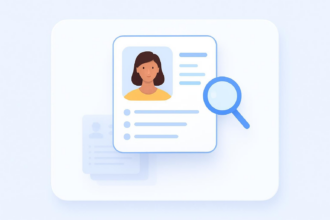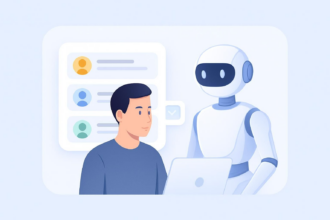In small business hiring, there’s nothing more comforting than a referral — when you mention a new position, and your employees immediately say, “I know the perfect person” or “Let me ping someone at my last workplace.” But when the referrals run dry, what should you do?
This guide will cover the process of using technology in recruiting, with an overview of the four categories of recruiting software and the strategies for each.
Let’s define some recruiter-speak. There are four main stages of the recruiting process, each with software and strategies to match:
- Sourcing. This is the process of filling your applicant pool, where the right people see and respond to your job posting.
- Engagement. After you have a pool of applicants, the engagement stage starts a back-and-forth between the employer and applicant, with the employer setting up interviews and answering questions to create a great candidate experience.
- Selection. Throughout the process, candidates undergo different screenings to narrow the pool down to a few top choices.
- Hiring. After deciding on a candidate, you go through the necessary steps to have them join your company, including drafting offer letters and hiring forms for them to fill out.
Sourcing: Keeping the gates open for the best hires
Sourcing software helps recruiters find and attract candidates. This is especially important when labor markets are tight and you need to recruit passive candidates who aren’t actively looking for a new job.
Optimizing your sourcing is like adjusting the water pressure on a garden hose until it’s just right. If you post your job ad on every site you can find, you might as well invite your recruiting team to drink from a fire hose. Conversely, you might send out a blast that goes largely unnoticed and only get a small trickle of candidates in response.
There are two strategic parts to effective sourcing: Crafting a targeted job description and deciding where to post it. Sourcing software can help with the second, but even the best software can only work with the material you provide. It’s important to clearly define what a candidate needs to succeed and where the candidate will have room to grow on the job.
For some positions, a wide distribution on job boards could provide more applicants than you’ll ever need. For more specialized positions, such as senior management, the sourcing process goes hand in hand with developing an effective employer brand — in other words, creating a great place to work. Software can help get the word out, but the way you operate your workplace determines the message that goes out.
Engagement: Providing a great candidate experience
Candidate engagement software helps streamline the communication and coordination needed to help all of your candidates through every step they take in the hiring process. Actively engaging your job candidates is important for two main reasons:
- First, candidate reviews on sites like Glassdoor have an impact on your employer brand as other candidates consider applying for the next job you offer.
- Second, you’re not competing for candidates in a vacuum. When candidates have many offers on the table, slacking off on candidate engagement is just asking to be ghosted — whether the candidate misses the interview or the first day of work.
With multiple candidates applying and several touchpoints per candidate, candidate engagement software goes a long way toward making sure your best candidates don’t slip through the cracks due to a misspelled address or an unread email. Effective software will help you keep in touch with your candidates on their terms — whether through phone calls, automated messages, or an easy-to-navigate mobile interface.
Screening: Selecting the best
Screening and selection software makes it easier to narrow your applicant pool to the most qualified candidates. It also helps ensure that screening is a group effort, which helps protect your organization’s diversity from individually biased or discriminatory recruiting.
There are many different screening methods, including
- Assessments. Certain jobs have measurable prerequisites that candidates can demonstrate by completing an assessment.
- Artificial intelligence. Using algorithms, some screening software options parse resume and other assessment data, screening out poorly matched candidates.
- Manager collaboration. Some software platforms offer a centralized location for those involved in the hiring process to compare notes on candidates after interviews.
- Phone screening. Even with modern technology, direct contact between recruiters and candidates is still essential to begin developing connections and to screen for people skills.
As you screen candidates, make sure that you keep the long-term employee experience in mind. Will this candidate have room to grow, both in their responsibilities and in their compensation? What effect will the new hire have on the current team? Do you screen for your company values? How?
Hiring: A seamless transition
Deciding on someone to hire doesn’t mean you’re ready for them to start on Monday. Hiring software bridges the gap with an automated process that includes new hire paperwork and, often, other elements of the onboarding process.
Hiring requires significant communication and coordination. This new hire checklist features 31 different tasks, and it’s one of the more conservative recommendations.
One-stop recruiting: Using an applicant tracking system
While you can get started with any of these recruiting technologies, it’s essential that the solutions you choose work well together. An applicant tracking system (ATS) handles these recruiting functions from a central interface, helping you connect every step in the recruiting process to a coherent hiring strategy.
What’s the biggest rule for using technology in recruiting? Technology should support your recruiting team as they make human connections and evaluate how well candidates align with the position and your organization’s values. Following this rule will help you attract excited candidates who become engaged employees in the long run.




































Send Comment:
1 Comment:
More than a year ago
Most recruiters will agree that a quality applicant tracking system (ATS) is essential in their recruitment process. thanks for sharing.